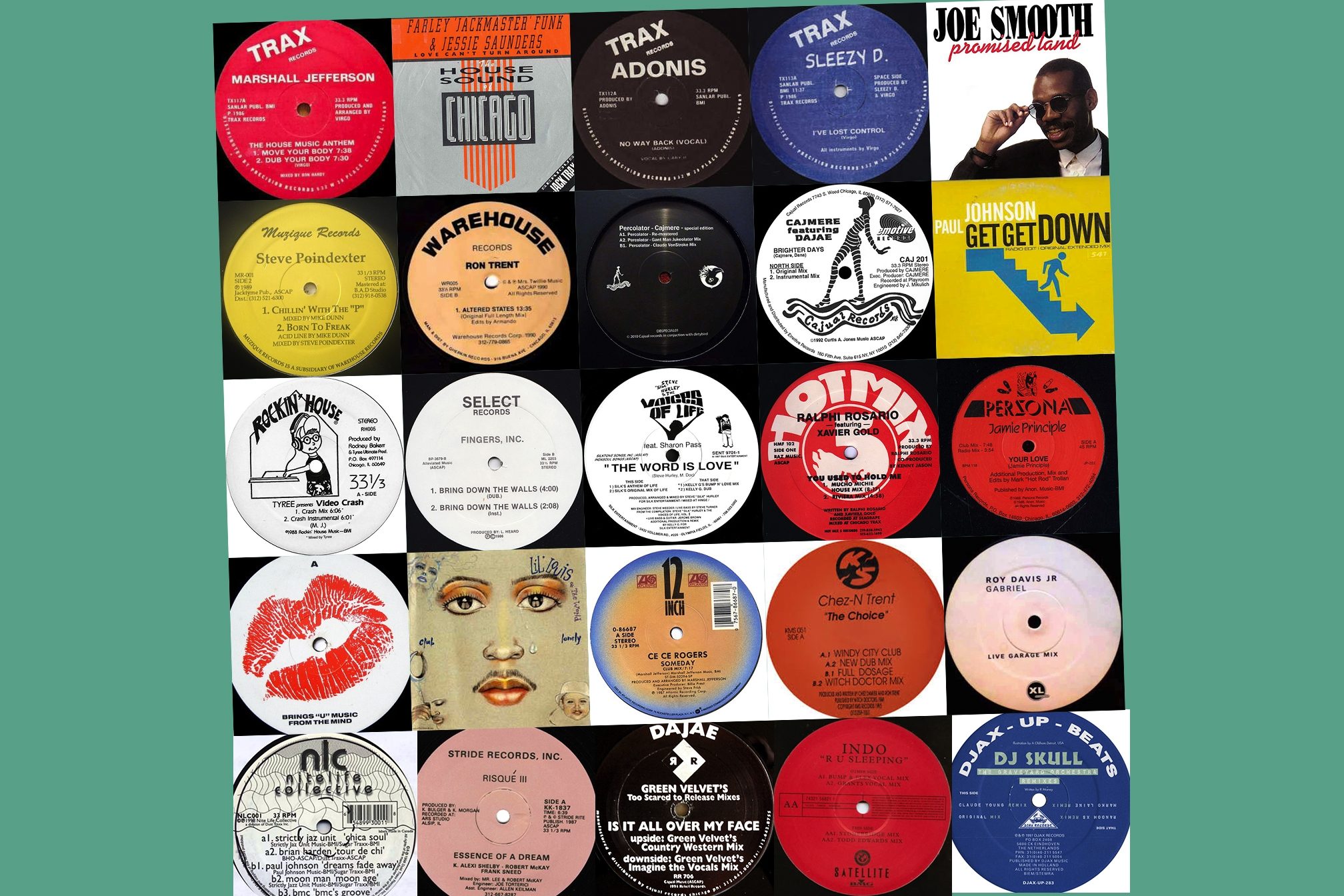Table Of Content
- ‘Argus’: Wishbone Ash’s Hard Rocking Masterpiece
- Charlie Haden & Hank Jones – It’s Me, O Lord (Standin’ In The Need Of Prayer)
- Roy Davis Jr.: “Gabriel (Live Garage Mix)” [ft. Peven Everett] (
- Daft Punk – Around the World
- Liana Flores Signs With Verve Records, Unveils ‘I Wish For The Rain’
- Masters at Work, The Album

Between 1994 and 1999, under the sequential series of aliases Round One through Round Five, they applied their spatial sensibilities and exacting production skills to deep house. You can hear their dubby signature in the chest-massaging sub-bass and glancing chords of “New Day,” but what makes the song so powerful is the guest vocal from UK session singer Andy Caine. From its 1980s roots in Black, Latinx, and queer communities in cities like Chicago, Detroit, and New York, electronic dance music exploded in the 1990s, taking techno, rave, jungle, and other permutations around the globe.
‘Argus’: Wishbone Ash’s Hard Rocking Masterpiece
In recent years its joyous hooks have been sampled by modern house stalwarts Hercules and Love Affair and pop superstar Rihanna. Originally a riff on a proto-house classic, Isaac Hayes’s 1975 disco foray ‘I Can’t Turn Around’, this collaboration between turbo-lunged singer Darryl Pandy and Farley Keith blew the roof off house music at the time. It still has the distinction of being a true crossover hit that’s maintained its dancefloor appeal decades on.
Green Day Throws a '90s House Party in New Video for Queer-Affirming Song 'Bobby Sox' - Yahoo Entertainment
Green Day Throws a '90s House Party in New Video for Queer-Affirming Song 'Bobby Sox'.
Posted: Fri, 19 Jan 2024 08:00:00 GMT [source]
Charlie Haden & Hank Jones – It’s Me, O Lord (Standin’ In The Need Of Prayer)
Unlike many of the genres in this list, these are songs that could have only been made in the 90s. First recorded by Jamie Principle (hailing from – you've guessed it – Chicago), the ‘Godfather of House’ Frankie Knuckles made the track famous with his slightly punchier version, still featuring Principle. It’s been covered and reworked by many different DJs and producers over the years, but Knuckles and Principle’s version is the one that has rightly gone down in dance music history. After evolving on the Chicago club scene in the early ‘80s, house music exploded at the end of the decade to become the world’s most exciting and innovative dance genre. By the early ’90s, massive pop stars like Madonna, Janet Jackson and Kylie Minogue were all incorporating elements of house music into their sound – a sure sign that it had infiltrated the mainstream. If you prefer your grooves rough around the edges, Theo Parrish's 1998 debut album is the one for you.
NEIL FRANCES Honor '80s-'90s House Music and the Morning After on 'It's All a Bit Fuzzy' - American Songwriter
NEIL FRANCES Honor '80s-'90s House Music and the Morning After on 'It's All a Bit Fuzzy'.
Posted: Fri, 02 Feb 2024 08:00:00 GMT [source]
Roy Davis Jr.: “Gabriel (Live Garage Mix)” [ft. Peven Everett] (
For more hip-hop, check out our list of the 100 best hip-hop songs of the 90s. One of the finest example of how dance music could do more than just borrow hooks and melodies from pop, ‘Where Love Lives’ went one step further. Britsh singer Alison Limerick’s rich vocal lines are layered over upfront house beats, creating the perfect crossover record, aimed right at the mainstream, but still retaining the dance music credentials of all involved. Though it originally dropped in 1990, it wasn’t until 1996 that a remix package finally sent ‘Where Love Lives’ into the dizzy heights of the UK top ten, where it really belonged. The same year, it also climbed into the upper echelons of the US club charts, where it also deserved to live.
There are plenty of early ’90s tracks that mixed house and rave to great effect, but perhaps none more so than this impossibly energetic stomper. The manic piano stabs, rushing rhythm and commanding vocals provide a soundtrack for burning more calories than any exercise video ever did. From New Wave dance and Hi NRG to classic House music in the 90s, the genre’s influence has permeated every dance floor. This smashing 1999 release put iconic DJ and Producer Paul Johnson on the global radar. "Get Get Down" is one of those tracks that everyone has heard at least once.

Daft Punk – Around the World
And then the song fully emerges, the bass suddenly going like something stolen out from under Bernard Edwards’ fingertips, the hi-hat doing that bright, open chhh business on the offbeat. The up-from-underground stuff turns out to have been sort of poignantly appropriate. “Around the World” was an exhumation, disco as reworked in post-industrial Chicago and Detroit, then adapted anew by two blessed weirdos from Montmartre, Thomas Bangalter and Guy-Manuel de Homem-Christo.
It’s been a DJ favourite ever since (for everyone from Ellen Allien to Julio Bashmore) thanks to its pulsing bleeps and plaintive vocal vibes. From 1994 until the turn of the millennium, Gemini, aka Spencer Kincy, was one of the most revered figures in the second wave of Chicago house. A decade ago, when a reporter tracked him down, he was homeless and apparently struggling with mental illness, even as a fresh crop of reissues, edits, and bootlegs was boosting his popularity among a new generation of clubbers and DJs. Read Pitchfork’s list of the best songs of the 1990s here and best albums of the 1990s here, and check out our full ’90s package here. African music continued to become a power player in the worldwide ecosystem in the 1990s, with superstars like Ali Farka Toure working with legendary American polymath Ry Cooder.
Masters at Work, The Album
Mr. Fingers is Larry Heard, a totemic figure in the history of Chicago house music. ”—produced alongside Robert Owens and Robert Wilson as Fingers Inc.—endures today as one of the genre's most iconic tracks, and has been remixed and reworked by countless producers who came after. Throughout various interviews, Heard has characterized himself as an instrumentalist who prefers the more organic songwriting process to computer-based composition, and his 1992 album testifies to that. While much of it is built on top of drum machines and synths, it often sounds more like fully formed R&B or soul than the stripped-back club tracks many of his contemporaries were producing at the time. The double platinum-selling debut album from the Italian group Black Box played a huge role in bringing house music to pop radio the world over. To add insult to injury, the group then hired a tall, skinny model to lip-sync in the music video for their album's second single—rather than giving camera time to the more heavy-set Wash.

Back in 1987, it heralded the era of rave, it accelerated house, it sounded sublime then and still does now. "Missing" is a song by English popular music duo Everything but the Girl, taken from their eighth studio album Amplified Heart (1994). Released in August 1994 as the second single off the album it was an initial failure until their label Atlantic commissioned a remix by Todd Terry.
But nothing better exemplifies ’90s dance music than house, whose pumping groove supplies the heartbeat of club culture. Those springy piano chords, those kaleidoscopic synth stabs, those driving beats… They just always sound great. Detroit’s Derrick May (working under the name Strings of Life here) might be a techno pioneer, but he arrived there by feeding Chicago house through a futuristic, funky shredder, epitomised by this timeless track.
Background singer turned vocal queen Cece Peniston's bright and colorful “Finally” was a strong debut for the former gospel singer. Considered one of the top house tracks of all time, it showcases Peniston’s bold voice, a euphoric riff, and chorus quintessential of the disco influences in house music. Next time you go to a festival, count how many times you hear that iconic synth line break through the mix. Though genres like indie rock and grunge became mainstays during the 1990s, the behemoth that is pop music still dominated the charts and the cultural zeitgeist during the decade.
Women continued to innovate, too, as acts like The Dixie Chicks and solo stars such as Lucinda Williams and Shania Twain began chiseling the genre in their image. This number from Chicago’s Lil’ Louis was one of the first house tracks to enjoy both considerable commercial success and heavy club airplay on its release. Even one listen to its infectious, unrelenting groove and orgasmic tempo shifts is enough to understand exactly why it got everyone so excited. Having your track remixed by every DJ and their dog doesn’t necessarily mean that the original is a classic. The bubbling, filtered blips are so beautifully weird when mixed in with a driving Chicago rhythm that it’s impossible to ignore it. If you’ve been to more than a handful of club nights, it’s almost guaranteed you’ll have heard a DJ drop this deviant dancefloor-filler.
First Floor saw the Chicago-born, Detroit-based producer re-writing all the rules with his unkempt and unfussy approach to deep, soulful house. Much like Moodymann, Parrish weaves a vibrant tapestry of gospel and soul sound bytes—though his stuttering loops, damaged samples, and general lack of respect for musical conventions set him apart from the rest of the pack. His famously adventurous DJ sets—which extend up to eight hours—touch on a broad range of genres across four or five decades, and have given him a reputation as one of the great record diggers of our time. Danny Tenaglia never enjoyed the pop success of contemporaries like Armand Van Helden or Deee-lite, but to this day he remains one of the seminal figures in New York house music. The prolific DJ and producer began his career in Brooklyn, DJing at roller discos in the late ’70s and early ’80s and later became a resident at legendary downtown dance spots like Twilo, Tunnel, and Vinyl. You can still catch Tenaglia playing all-night sets at spots like Output in Brooklyn or Space in Ibiza.


No comments:
Post a Comment